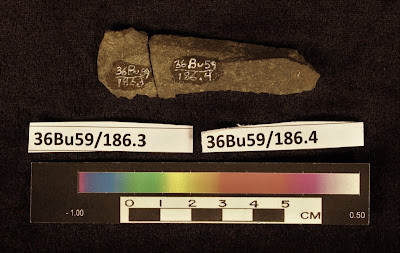Autumn is around the corner and the Section of Archaeology
at The State Museum of Pennsylvania is gearing up for another busy season. This
post includes a listing of upcoming events featuring Pennsylvania archaeology.
This three-day festival, celebrating the Susquehanna River,
takes place along the banks of the river and on City Island in Harrisburg.
Pennsylvania’s archaeology will be featured in a booth staffed by professional
archaeologists and volunteers from The State Museum of Pennsylvania. Here,
visitors will be able to see artifacts dating back thousands of years, take a
“ride” in our dugout canoe, hold replica tools used to make the dugout canoe,
learn about Pennsylvania’s past and find information on upcoming archaeology
events in Harrisburg.
Sitting in the dugout canoe has
become an annual tradition for many kids and families (image: PHMC)
The Archaeology booth and dugout canoe will be located near
the Pow Wow on City Island, along the back side of the baseball stadium.
This map shows the location of The
State Museum’s Archaeology booth at the 2019 Kipona Festival.
Since 2006, The State Museum of Pennsylvania’s Section of
Archaeology has conducted excavations at Fort Hunter Mansion and Park. The
primary goal of the excavation is to look for evidence of the French and Indian
War era fort for which the park is named. The fort that stood at this location dates
to the 1750s.
In addition to conducting
excavations, Pennsylvania archaeology brochures, posters and information about
the museum are also made available to visitors (image: PHMC)
Throughout the years, excavations have revealed a rich and
varied past at Fort Hunter. Artifacts collected during excavations at Fort
Hunter have included items dating to the prehistoric period and the 18th,
19th and 20th centuries. These relics of the past in
combination with thorough research have help to clarify the many
transformations that have taken place at the site of the current mansion and
the surrounding grounds.
Artifacts recovered from Fort Hunter
pictured here include prehistoric points, gun side plate, Minié ball, button,
smoking pipe and dog licenses. (image: PHMC)
Weather permitting, excavations will be open to visitors
from 9:00 a.m. – 4:30 p.m. Monday thru Friday and on Sunday, September 15 for
Fort Hunter Day.
The Archaeology Section of the State Museum of Pennsylvania
in Harrisburg invites you to attend our annual Workshops in Archaeology program
on Saturday, November 9, 2019.
Artifacts and reproduction points
will accompany a demonstration by expert flint knapper Steve Nissly. (image:
PHMC)
Last year’s popular theme exploring the Susquehannock
Indians of central Pennsylvania will be continued with an examination of western
Pennsylvania’s Monongahela Indians. We have invited a panel of experts to share
their knowledge and research with us on this extensively investigated, but
still mysterious culture. The Monongahela were the dominant Indian culture in
southwestern Pennsylvania, Ohio and northern West Virginia around 1000 AD, but
by 1635 they vanish from the archaeological record.
This year’s Workshops in Archaeology will explore the many
aspects of this culture including their pottery, diet, health, village patterns
and social organization.
Professionals will be on hand to
assist attendees with artifact identification and recording archaeological
sites. (image: PHMC)
Throughout the day, there will be demonstrations by
professional flint knapper Steve Nissley, and experts will be on hand from
Pennsylvania’s State Historic Preservation Office to assist attendees with
artifact identification and recording archaeological sites.
Please join The State Museum’s Section of Archaeology in
celebration of our rich archaeological heritage this fall. Harrisburg’s Kipona
Festival and Pow Wow, the Archaeological investigation at Fort Hunter, and
Workshops in Archaeology present valuable opportunities to meet State Museum
archaeologists and learn more about how we can preserve our past for our
future.


















